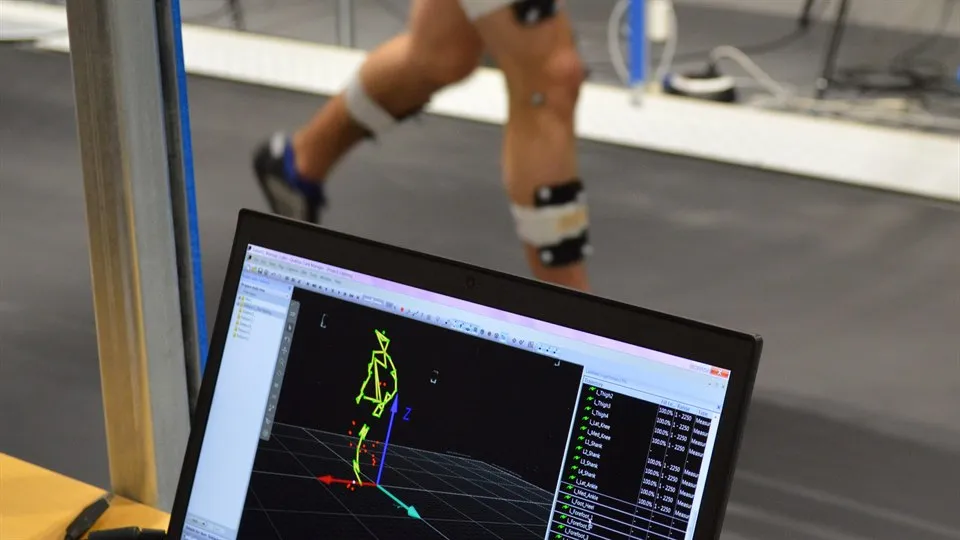Researchers' advice for downhill running – contrary to what most people think
A new research study at Mid Sweden University shows unexpected differences in energy consumption at low and high running speeds on different inclines. The tests have been carried out on a treadmill with the help of infrared cameras that measured the movement pattern in detail in the running step.
The research study began back in 2017 at the Sports Tech Research Centre. David Sundström, Markus Kurz and Glenn Björklund are some of the researchers who have been involved in the different phases of the study at the research centre.
"We have mainly looked at two things. One is the biomechanics of the running step, where we have analyzed the movement of the legs. We have also looked at how much energy you use when running in relation to speed and incline," says David.
The researchers have based their work on different scenarios with three slopes: five and ten degrees of descent and running on flat ground. All gradients were run by the test subjects at a lower speed and a higher speed that represented competition speed in long trail races. The different conditions were simulated on the treadmill in the wind tunnel at the Sports Tech Research Centre. The tests have generated large amounts of data that have subsequently been analyzed.
"What we have seen is that running on a five-degree slope is more energy-efficient at the higher speed than at the lower speed. When it is steeper, it seems to turn. Then we have noticed that less energy is consumed at a lower speed. What stands out in our tests is the difference between energy consumption at low and high speed on different gradients," says David.
"In this type of study, we want to try to give practical advice to coaches to show what the results can be used for, and in this case, for example, we see that in steep descents it pays off for the runner to maintain a lower speed." Markus interjects.
Research using modern Hollywood technology

Infrared cameras recorded the test subjects' movements on the treadmill in the wind tunnel.
In the experiments on which the study is based, the researchers used an advanced camera system with infrared cameras. The technology, which is also known as "3D motion capturing", is widely used in the film world to record human movements that are then performed by animated characters. The 2009 film Avatar is one such example.
"It's almost the same thing we do. We used the technique to determine knee and hip angles. Everything is time-stamped so we can calculate speeds and angles when the foot is put down on the ground. What emerged from our study is that the incline mainly affected the knee angle, while the running speed affected the angle of the hip joint, which we had also expected," says David.
There is also a follow-up study underway in collaboration with the National Winter Sports Centre, where Glenn Björklund now works. There, similar tests are carried out with more individuals to investigate whether the initial results still hold up.
"For athletes and coaches, this is very important. We have seen certain patterns in the movement of the legs and knees that we believe have to do with the desire to avoid excessive strain on the joints. This is not really something this study focuses on, but we believe that it may be important to be able to stay injury-free and it is something we would like to investigate further," David concludes.
Read the article describing the research study and the results.
